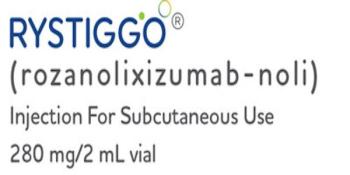
Chronic Respiratory Conditions Like Asthma, COPD Are Most Costly to Treat
Health care costs in the United States for respiratory conditions have increased from 1996 to 2016, particularly for chronic conditions like chronic obstructive pulmonary disease (COPD) and asthma.
Health care spending on
Even though a considerable amount of health care spending is conducted on respiratory conditions in the United States, a comprehensive report of spending across multiple settings and over time has not been executed, said the authors, who sought to provide the most up-to-date account of health care spending on respiratory diseases.
Data from the Institute of Health Metrics and Evaluation’s Disease Expenditure Project Database was used in estimating spending for 11 respiratory conditions.
Researchers used a decomposition analysis to estimate spending change related with changes in the 5 factors of population growth, population aging, disease prevalence, service usage, and service price and intensity.
Total spending for all respiratory conditions rose $71.7 billion (95% CI, $63.2–$80.8 billion) from 1996 to $170.8 billion in 2016, (95% CI, $164.2–$179.2 billion), for an annualized growth rate of 2.7%.
Asthma and COPD were the respiratory conditions with the highest spending in 2016, amounting to $35.5 billion and $34.3 billion, respectively. Rising service price and intensity were corrolated with 81.4% growth from 1996 to 2016. Almost half of the $34 billion spent on COPD in 2016 was attributable to smoking.
The spending was fueled by the rising cost of prescribed medications for respiratory conditions. For both COPD and asthma, pharmaceutical care held the highest annualized growth rate and biggest absolute increase in spending, exhibiting consistent growth for the duration of the study period. Asthma drug spending was estimated at $17.0 billion; COPD spending was similar, split between pharmaceuticals ($9.8 billion) and inpatient care ($9.9 billion).
Researchers attributed the increased drug spending on rising inhaler prices, “which became more expensive over time with minimal clinical innovation, driven by extended patent protections on new delivery devices, new combination inhalers, and the 2008 change from chlorofluorocarbon to hydrofluoroalkane propellants.”
Usage of inpatient and ambulatory services costs fell across all respiratory conditions, possibly because of changes in health care delivery payment models, provider consolidation, certain new medications, and vaccines.
By payer category, public insurance had the highest percentage of total spending in 2016, followed loosely by private insurance.
Spending was highest in the outpatient setting, as well as among those aged 65 and older and among females.
The researchers cited several implications that can serve as takeaways for policymakers. They suggested that focus must be paid to drug and health care service prices, especially pharmaceuticals, and to leverage the purchase power of large payers such as Medicare. They also suggested that service usage and service price and intensity should be simultaneously addressed in policy design for sustainable spending reduction. Lastly, researchers found that tobacco and smoking prevention efforts are imperative to continue because those habits impact spending on respiratory disease.
The authors cautioned that actual spending on respiratory conditions is likely higher, as the analysis did not include the costs of durable medical equipment, like oxygen and nebulizers, or for other respiratory conditions that were not included in the analysis, such as cystic fibrosis and pulmonary hypertension.
Reference
Duan KI, Birger M, Au DH, Spece LJ, Feemster LC, Dieleman JL. Health care spending on respiratory diseases in the United States, 1996-2016. Am J Respir Crit Care Med. 2023;207(2):183-192. doi:10.1164/rccm.202202-0294OC
Newsletter
Stay ahead of policy, cost, and value—subscribe to AJMC for expert insights at the intersection of clinical care and health economics.














































